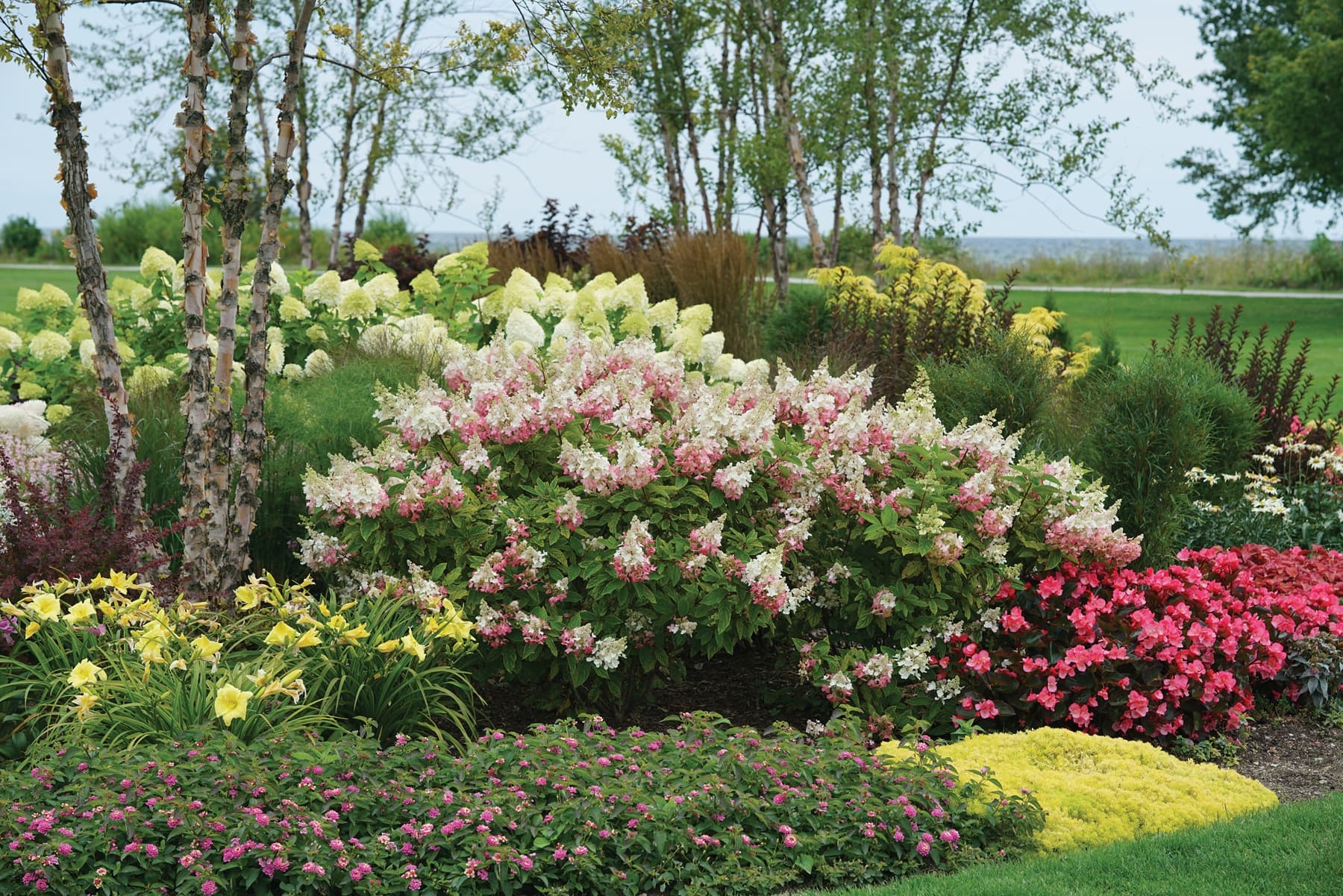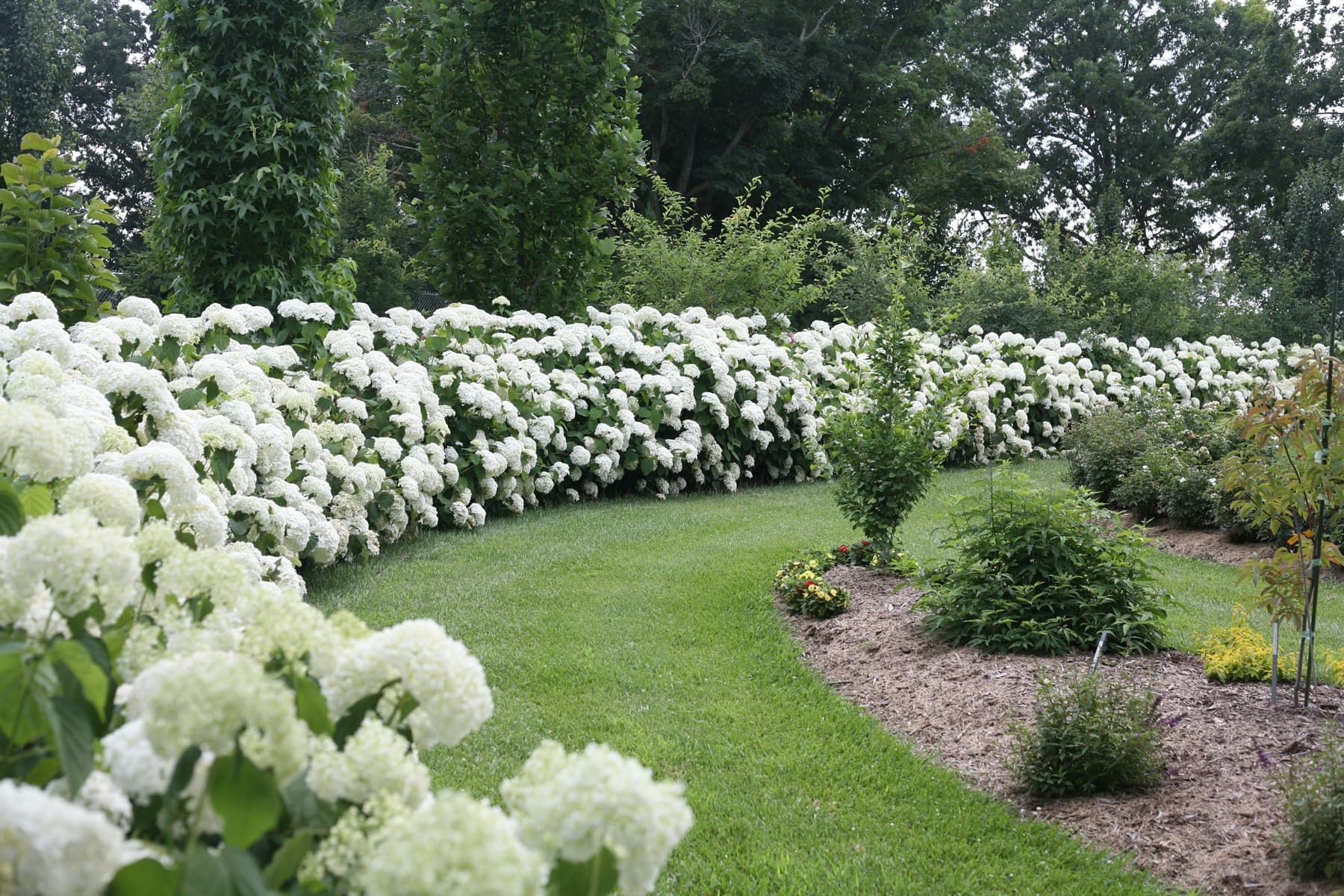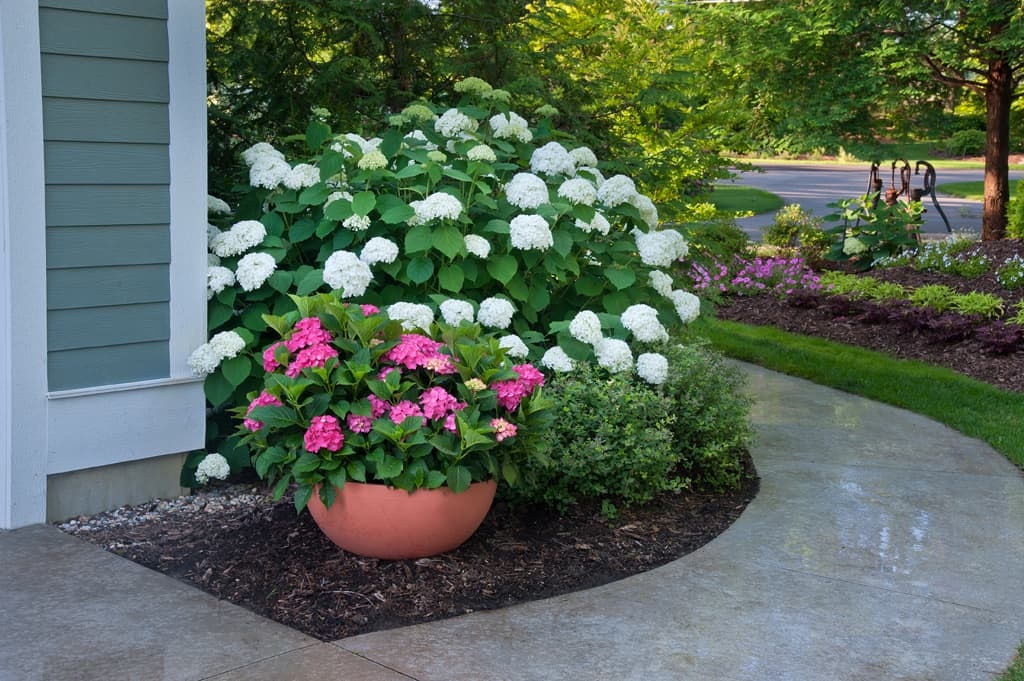Your cart is currently empty!
Home / Garden Blog / What’s the best type of hydrangea for my garden?
What’s the best type of hydrangea for my garden?
-
Susan Martin
Being a shade gardener, you might imagine that I grow A LOT of hydrangeas. Some are growing in full morning sun while others see only a tiny amount of direct sunlight each day. If I had any full sun spots, I’d grow hydrangeas there, too. Their incredible versatility makes it so there’s a hydrangea for every place in the garden.
I’ve already written extensively about the ins ‘n outs of growing hydrangeas in this article. You’ll find answers to questions like how to turn them from pink to blue, how and when to prune, and what to do if they didn’t bloom there.
Let’s examine a few of the many choices of hydrangeas for specific uses in landscapes.

HYDRANGEAS FOR FLOWER BORDERS
I like to incorporate hydrangeas in my perennial borders to give them some height and to provide winter interest once the perennials are dormant. All kinds will work, just take care to place the taller varieties towards the back to leave room for shorter perennials and annuals in front. If you include all different species of hydrangeas in your flower border, you’ll have something in bloom from early summer through fall.
In this picture, Pinky Winky® panicle hydrangeas (Hydrangea paniculata, hardy in zones 3-8) play center stage while ‘Limelight’ hydrangeas pop up behind. These two panicle hydrangeas can grow 6-8 feet tall but pruning them back by 30% each year in early spring will keep them a bit shorter and fuller. ‘Going Bananas’ daylilies, Surefire® Rose begonias and Luscious® Royale Cosmo lantana fill out the front of this garden bed.
Other types of hydrangeas that grow beautifully in flower borders include:
- Let’s Dance® reblooming hydrangeas—sun to part shade in zones 5-9
- Invincibelle® and Incrediball® series of smooth hydrangeas—sun or shade in zones 3-9
- Bobo®, Little Lime® and Little Quick Fire® panicle hydrangeas—sun to part shade in zones 3-8
- Tuff Stuff™ series of mountain hydrangeas—sun to part shade in zones 5-9

HYDRANGEAS FOR HEDGES AND LIVING SCREENS
Large and tall varieties hydrangeas make the best hedges and screens in the landscape. The hedge you see here is made entirely of Incrediball® smooth hydrangeas (Hydrangea arborescens, hardy in zones 3-9).
This improved Annabelle-type hydrangea has stronger stems that won’t flop each time it rains. Its peak bloom time is early to midsummer, then the white flowers turn an attractive shade of light green for the rest of the season. Each plant grows 4-5 feet tall and wide, so you’ll need 4-5 plants to grow a 20 foot long hedge. In most climates, you can grow this hedge of smooth hydrangeas in sun or shade. In the hottest zones, it will need some protection from afternoon sun.
Other types of hydrangeas that make great hedges and screens include:
- Taller panicle hydrangeas like ‘Limelight’, Fire Light®, Pinky Winky®, Quick Fire® and Zinfin Doll®–sun to part shade in zones 3-8
- Oakleaf hydrangeas like the Gatsby® series—sun or shade in zones 5-9 (protect from afternoon sun in warmer zones)

HYDRANGEAS FOR CONTAINERS
Dwarf hydrangeas are easy to grow in large containers on a balcony, porch or patio. If you start with a standard 1-gallon sized hydrangea plant, choose a container that is at least 16 inches in diameter. Fill it with good quality potting soil, mix in some continuous release plant food, cover the root ball with soil, and give it a good drink. Then, you’ll be ready to enjoy your potted hydrangea all season.
If you’d like to overwinter your hydrangea in the container, choose a variety that is at least two zones hardier than your own. For example, if you live in zone 5, choose a zone 3 hardy variety. Your other option is to take it out of the container and plant it in the landscape in the fall. We’ve covered all that and more in this Hydrangea Care article.
Dwarf hydrangeas that grow well in containers include:
- Cityline® dwarf bigleaf hydrangeas (Cityline® Venice is pictured here)– sun to part shade in zones 5-9
- Let’s Dance® Blue Jangles® dwarf bigleaf hydrangea– sun to part shade in zones 5-9
- Invincibelle Wee White® or Mini Mauvette® dwarf smooth hydrangea– sun or shade in zones 3-9
- Tiny Tuff Stuff™ dwarf mountain hydrangea– sun to part shade in zones 5-9
- Categories: Flowering Shrubs, Landscape Plantings
- Tags: containers, dwarf hydrangeas, Hedges, Hydrangeas
Recent Posts
- 20 Brilliant Blooming Flowers for Front Yards April 19, 2024
- 10 Shrubs That Like Full Sun and Heat April 4, 2024
- Window Box Ideas for Summer – Tips and Recipes March 20, 2024
